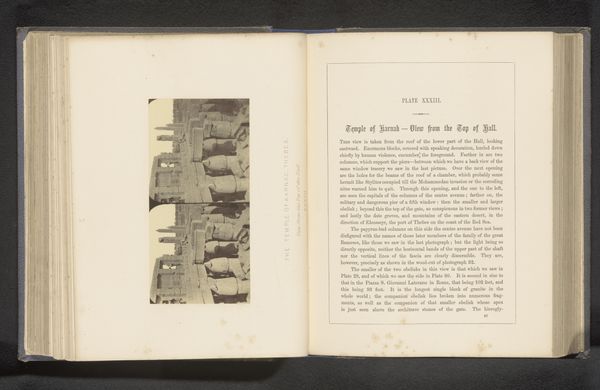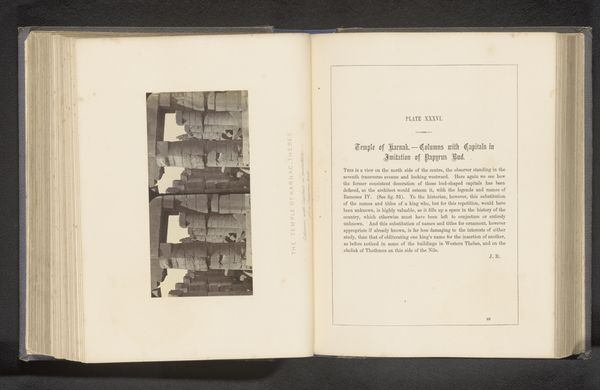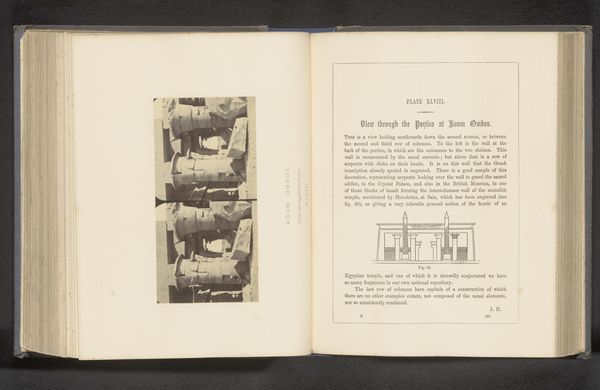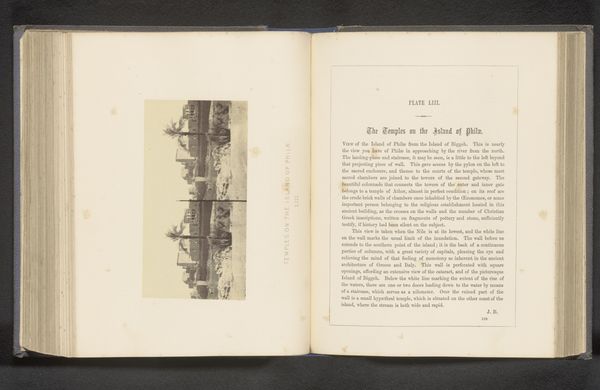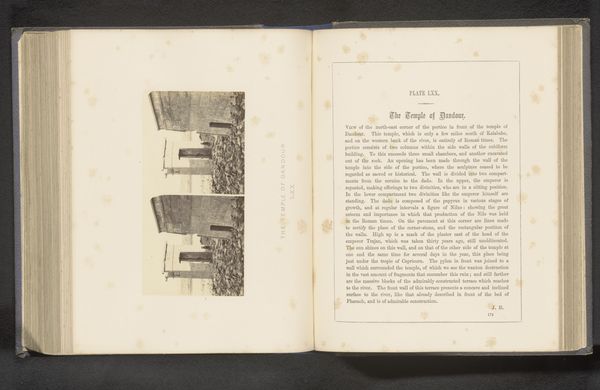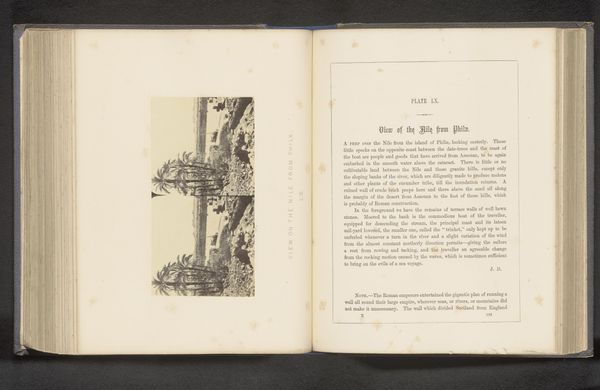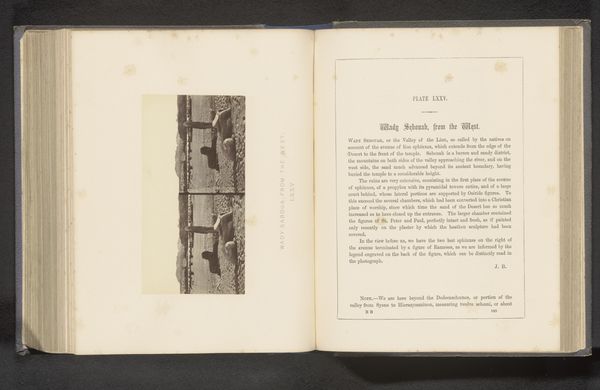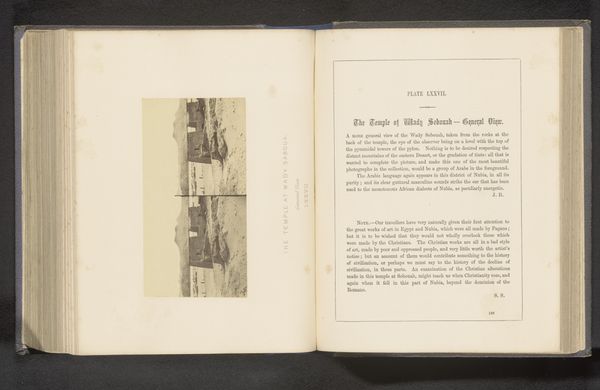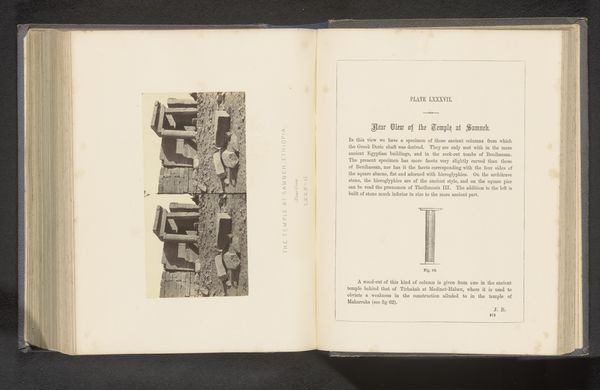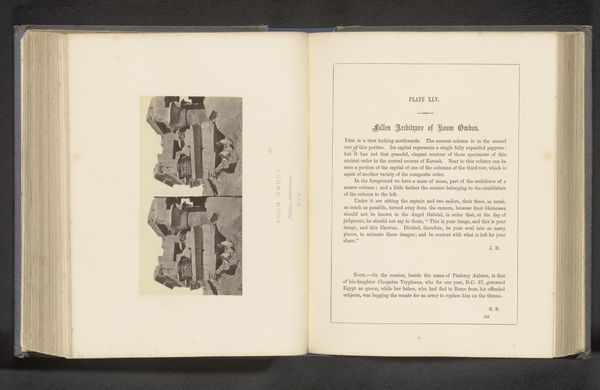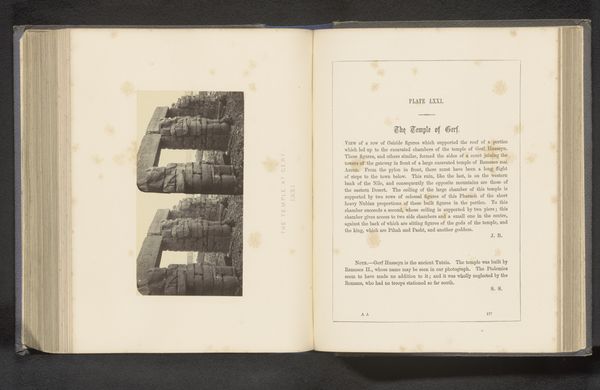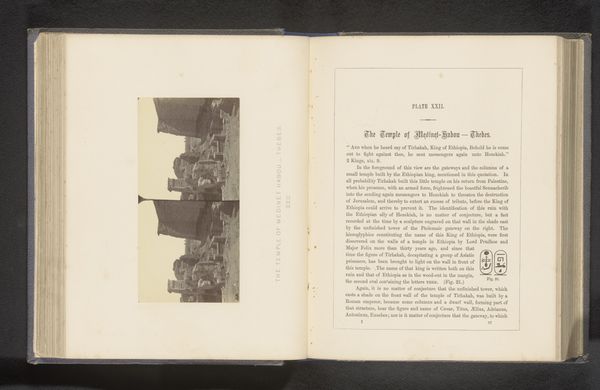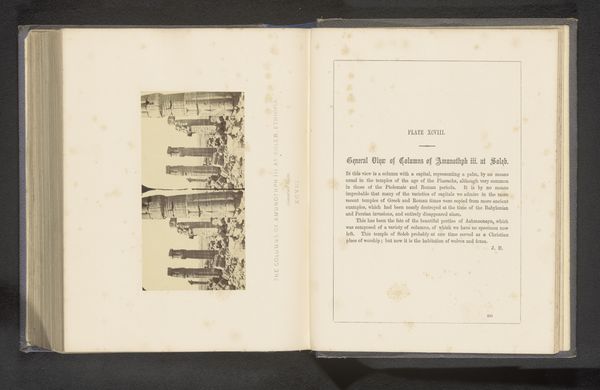
print, photography, albumen-print
# print
#
landscape
#
ancient-egyptian-art
#
photography
#
ancient-mediterranean
#
cityscape
#
albumen-print
Dimensions: height 74 mm, width 144 mm
Copyright: Rijks Museum: Open Domain
Editor: Here we have Francis Frith’s albumen print, "Gezicht op de ruïnes van de tempel van Debod te Aswan," created before 1862. It depicts the temple ruins, and honestly, there's a certain romantic quality to seeing these ancient structures photographed so long ago. It makes you wonder how they experienced the era. What’s your perspective on this photograph? Curator: Well, immediately, I consider the context of 19th-century photography and its relationship to Egypt. Photography was still relatively new, and Egypt held a huge fascination for Europeans. We have to think about this image not just as a neutral depiction, but as a product of its time. What political and social forces do you think shaped the creation and reception of images like this one? Editor: I suppose it feeds into the broader European fascination with ancient civilizations, perhaps with a hint of exoticism? A sense of colonial power, even? Curator: Exactly! Photography like this contributed to the construction of Egypt as an exotic, ancient place ready to be “discovered” and, in a way, possessed by the West. Think about the power dynamics at play: who is behind the camera, who is consuming these images, and what impact does that have on the local population and their cultural heritage? This particular image, an albumen print, points to that history of representation. It evokes notions of empire and control. It frames the Egyptian landscape as something static and monumental, removed from its contemporary context. Editor: That’s fascinating; I hadn't considered the power dynamics embedded within what seems like a straightforward landscape photograph. This feels like a completely new way of looking at photography's role within society. Curator: Right! And thinking about how this photograph might have circulated— in books, displayed in galleries—allows us to better understand its role in shaping public perceptions of Egypt at that time. These photographs weren't merely documents; they were powerful tools in shaping narratives. Editor: That’s incredibly insightful. It’s helped me see this print less as a picture and more as a historical document laden with social and political meaning. Curator: And that understanding, that awareness, is how we start to unpack the complexities behind even the seemingly simplest works of art.
Comments
No comments
Be the first to comment and join the conversation on the ultimate creative platform.
